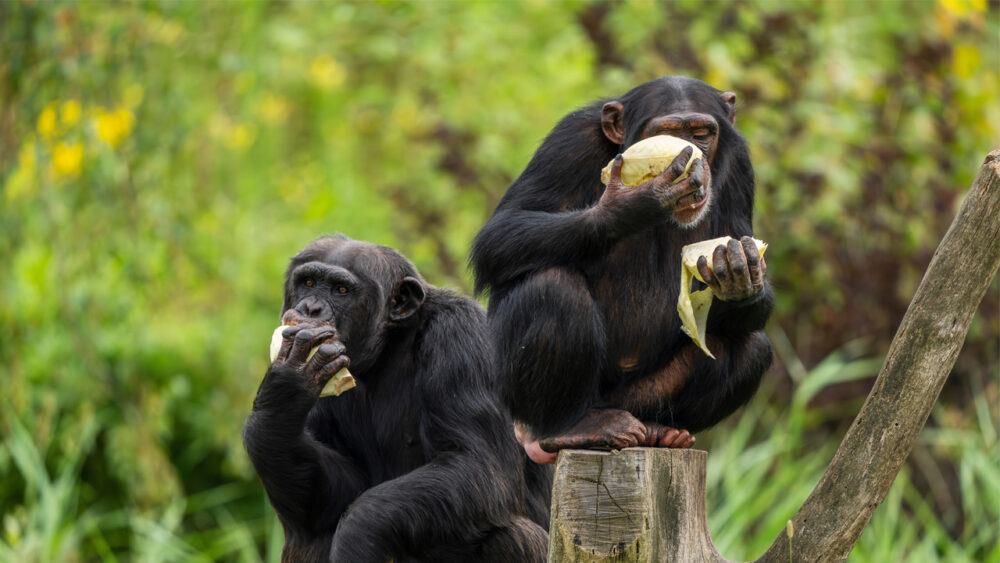Chimpanzees in Uganda’s Budongo Forest have been observed using medicinal plants to treat wounds and injuries, displaying behaviors that include applying chewed leaves to open cuts and helping others remove snares.
Researchers from the University of Oxford, collaborating with local scientists, documented these “forest first aid” practices by studying two chimpanzee communities, Sonso and Waibira, over eight months. The findings build on last year’s discovery that chimpanzees eat specific plants to self-medicate, with this study cataloging a range of behaviors from wound care to hygiene practices, such as using leaves to wipe after defecating.
There is a “whole behavioural repertoire that chimpanzees use when they’re sick or injured in the wild – to treat themselves and to maintain hygiene,” said lead researcher Elodie Freymann, the BBC reported. “The chimpanzees dab them on their wounds or chew the plants up, and then apply the chewed material to the open injury.”
The team recorded instances of chimpanzees using plants like Acalypha sp., known for antimicrobial properties, and Pseudospondias microcarpa, which soothes pain and inflammation. One juvenile male, KO, mashed Argomuellera macrophylla stem bark and rubbed it into a leg wound, mirroring traditional African medicinal practices. Another chimpanzee used Lasiodiscus pervillei leaves to clean dirt and blood from a cut.
Prosocial behaviors were also observed, with seven cases of chimpanzees aiding others, including four instances involving unrelated individuals. A juvenile female, NT, chewed leaves and applied them to her mother’s wound, while a male, ZG, licked blood from a female’s injury after an attack.
“Animals are helping each other out. They’re capable of identifying others in need and then addressing those specific needs,” Freymann said, per Earth.com.
She noted that such actions, particularly helping unrelated chimps, suggest a capacity for empathy.
Injuries, often from human-set snares, are common, with nearly 40% of Sonso chimpanzees bearing snare scars. The study documented multiple snare removals, including a male, KT, freeing his wrist from a nylon snare.
“Our research helps illuminate the evolutionary roots of human medicine and healthcare systems,” Freymann said. “By documenting how chimpanzees identify and utilize medicinal plants and provide care to others, we gain insight into the cognitive and social foundations of human healthcare behaviors.”
The researchers compiled decades of observations from a field station logbook dating back to the 1990s, detailing behaviors like leaf-dabbing and snare removal. Freymann suggested these practices may reflect behaviors of a shared human-chimpanzee ancestor.
“It’s likely that our shared common ancestor also would have been capable of these care behaviors as well,” she said, Earth.com reported.
The study also highlights the potential for human medicine, as the plants chimpanzees use could inspire new treatments.
“If we want to hone in on these amazing medicinal resources, watching and learning from the animals is an incredibly effective way to do it if it’s done ethically and responsibly,” Freymann said.
She contrasted human vulnerability in the wild with chimpanzees’ resilience: “If I were plopped down here in this forest with no food and no medicine, I doubt that I’d be able to survive very long, especially if I were injured or sick. But chimpanzees thrive here because they know how to access the secrets of this place, and how to find all they need to survive from their surroundings.”
The findings suggest that chimpanzees’ plant-based healing may be widespread, with similar behaviors observed in orangutans and potentially other primates, offering clues to the origins of human medicine.


